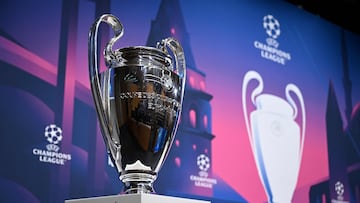What is the difference between the Champions League and the European Cup?
The showpiece tournament organized by UEFA has just one game remaining in its current 2024 edition, but much has changed over the years.


The UEFA Champions League is reaching its climax. The premier continental competition is facing its final match of the season, and it promises to be a spectacular event. Real Madrid and Borussia Dortmund will face off in London with a single objective: to lift the trophy that crowns them champions of this prestigious tournament.
The competition, renowned and highly esteemed across the Old Continent and around the world, was established in 1955 and has seen numerous clubs from European countries claim this title, with the prestige, and more recently riches, that comes with it.
#OnThisDay in 1984
— 80s&90sFootball ⚽ (@80s90sfootball) May 30, 2024
Liverpool beat Roma on penalties in Rome to win the European Cup
Remembered for the jelly legs of Bruce Grobbelaar in the shoot-outpic.twitter.com/OUdn0QixIT
Champions League or European Cup?
There are many significant details to consider about this UEFA-organized competition, formerly known as the European Cup, which in 1992 changed its name and format to become the Champions League we know today.
While it is effectively the same competition, the European Cup refers to the editions from its inception in the 1955-56 season until the 1991-92 season. From then on, it has been known as the Champions League and has had a few tweaks since. The first edition under this new name was won by Marseille, who defeated Milan 1-0 in the final.
#OnThisDay 1993
— Football Remind ⚽️ (@FootballRemind) May 26, 2024
Basile Boli scored the winning goal for Marseille against AC Milan in the 1993 Champions League Final ⚽️🏆pic.twitter.com/SM4i7q5LVa
Why was the name changed from the European Cup to the Champions League?
Related stories
The reason for the name change was basically because of the restructuring of the competition starting from that year. However, the changes were introduced gradually over several seasons until reaching the current format.
One of the most significant differences between the two formats is that the European Cup was played only by the champions of each national league, whereas from 1997 onwards, more teams from each country began to participate, expanding the final phase from 16 to 24 clubs. That’s why we now see multiple teams from the same country in the draws for the various stages of the competition. Currently, 32 teams compete, and starting from the 2024/25 season, this will expand to 36 teams.
Complete your personal details to comment